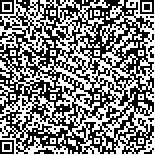| 摘要: |
| [摘要] 目的 分析雷珠单抗玻璃体内注射(intravitreal ranibizumab,IVR)治疗视网膜分支静脉阻塞(branch retinal vein occlusion,BRVO)相关黄斑水肿(macular edema,ME)的疗效及安全性。方法 回顾性分析2017-05~2019-05该院因BRVO继发ME并接受IVR治疗的66例患者资料。根据荧光素眼底血管造影(fundus fluorescein angiography,FFA)检查结果将研究对象分为缺血性BRVO组(无灌注面积≥5个视盘面积,20例)和非缺血性BRVO组(无灌注面积<5个视盘面积,46例)。两组均采用3+prore nata(PRN) IVR方案进行治疗。比较两组治疗后1、3、6个月的最佳矫正视力(best-corrected visual acuity,BCVA)、黄斑中心凹视网膜厚度(central macular thickness,CMT),以及两组IVR注射次数和并发症发生情况。结果 治疗后两组BCVA均得到改善,与同组治疗前比较差异均有统计学意义(P<0.05)。但两组治疗后1、3、6个月的BCVA水平比较差异均无统计学意义(P>0.05)。治疗后两组CMT均呈下降趋势,与同组治疗前比较差异均有统计学意义(P<0.05)。但两组治疗后1、3、6个月的CMT水平比较差异均无统计学意义(P>0.05)。非缺血性BRVO组和缺血性BRVO组分别行IVR注射(4.17±0.93)次和(4.45±0.69)次,差异无统计学意义(P>0.05)。两组均未发生IVR相关的眼部或非眼部并发症。结论 采用3+PRN IVR方案治疗BRVO相关ME安全有效。 |
| 关键词: 视网膜分支静脉阻塞 黄斑水肿 雷珠单抗 |
| DOI:10.3969/j.issn.1674-3806.2020.06.17 |
| 分类号:R 774.5 |
| 基金项目: |
|
| Analysis of the clinical efficacy of intravitreal ranibizumab in treatment of macular edema associated with branch retinal vein occlusion |
|
WEN Mei-dan, HE Xiao-juan, YANG Fan
|
|
Department of Ophthalmology, Nanxishan Hospital of Guangxi Zhuang Autonomous Region, Guilin 541002, China
|
| Abstract: |
| [Abstract] Objective To analyze the efficacy and safety of intravitreal ranibizumab(IVR) in treatment of macular edema(ME) associated with branch retinal vein occlusion(BRVO). Methods The data of 66 patients with ME associated with BRVO who received IVR treatment in our hospital from May 2017 to May 2019 were retrospectively analyzed. According to the results of fundus fluorescein angiography(FFA), the patients were divided into ischemic BRVO(20 cases) group and nonischemic BRVO(46 cases) group. Ischemic BRVO diagnosis was made when the nonperfused area was greater than 5-disk area. When the nonperfused area was smaller than 5-disk area, the patients were diagnosed with nonischemic BRVO. Both groups were treated with 3+ prore nata(PRN) IVR. The best-corrected visual acuity(BCVA), the central macular thickness(CMT), the number of IVR injection and complications were compared between the two groups 1 month, 3 months and 6 months after treatment. Results The BCVA was improved in both groups after treatment, and the BCVA after treatment was significantly different compared with that before treatment in the same group(P<0.05). However, there were no significant differences in the levels of BCVA between the two groups 1 month, 3 months and 6 months after treatment(P>0.05). After treatment, the levels of CMT in both groups showed a downward trend, and the level of CMT was significantly different compared with that in the same group before treatment(P<0.05). However, there were no significant differences in the levels of CMT between the two groups 1 month, 3 months and 6 months after treatment(P>0.05). The number of IVR injection was (4.17±0.93)times in the eyes with nonischemic BRVO group and (4.45±0.69)times in the ischemic BRVO, respectively, showing insignificant difference between the two groups(P>0.05). There were no IVR-related ocular or non-ocular complications in both groups. Conclusion The 3+PRN IVR regimen is safe and effective in treatment of ME associated with BRVO. |
| Key words: Branch retinal vein occlusion(BRVO) Macular edema(ME) Ranibizumab |

